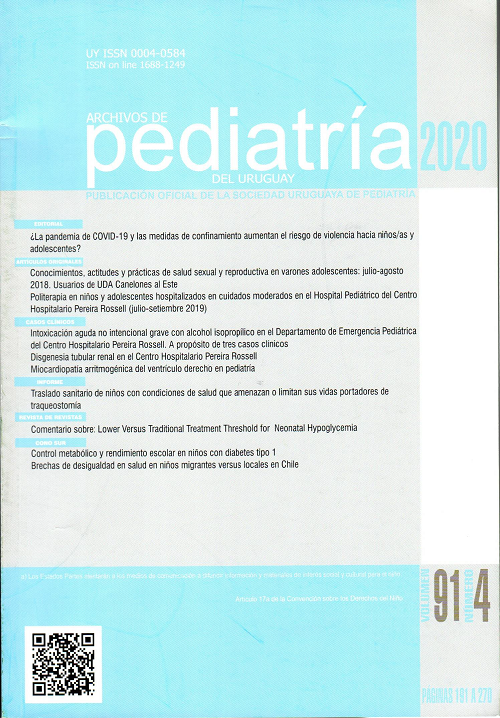Abstract
Introduction: the classical cardiomyopathy phenotypic classification includes hypertrophic, dilated, restrictive and non-compacted types. Arrythmogenic Right Ventricle Cardiomyopathy (ARVC) is a hereditary, infiltrative variety that causes the progressive replacement of ventricular myocardium with fibroadipose tissue that mainly affects the right ventricle.1-2-3 Although the onset of symptoms is uncommon in children, they seem to show more sudden death episodes than adults.
Clinical case: 12 year-old male, with arrhythmogenic right ventricle cardiomyopathy (ARVC), showing ventricular arrhythmia at 7 years of age, (extrasystoles and unsustained ventricular tachycardia). Further studies confirmed electrical abnormality, so we performed an electrophysiological study with ablation. The procedure resulted in a slight temporary improvement, however, but the arrhythmia was not completely eliminated. This maintained the risk of sudden death, so we implanted a portable cardiodesfibrilador, which did not record discharges since then.
Discussion: for this patient’s diagnosis we used the criteria set by Task Force 2010.4 The imaging diagnosis was based on the demonstration of morphological (aneurysms) or functional alterations; akinesia, dyskinesia or asynchrony of the wall, which show myocardium fibrofatty substitution. 3 Recurring right ventricle arrhythmias, despite intense pharmacological treatment, led to a radiofrequency myocardium ablation and later to the placement of an implantable cardiodesfibrillator.Conclusions: it is a rare pathology with extremely poor prognosis due to the severe and uncontrollable arrhythmias triggered by the altered myocardium tissue. The most effective treatment is the placement of a cardiodesfibrillator.

